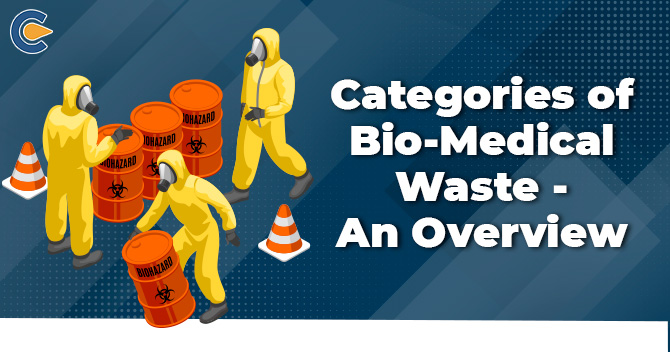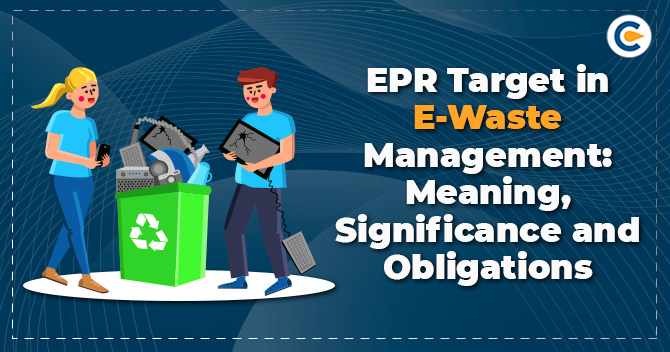All the activities of humans produce waste and we already know that such waste may be harmful and requires safe disposal. Sewage waste, industrial waste, and agricultural waste pollute water, air, and soil. It can also be harmful to the environment and human beings. Likewise, hospitals and other health care facilities generate lots of waste which can transmit infections like HIV, Hepatitis B and C & Tetanus to the people who come in contact with it. As per the report, India produces around 3 million tonnes of bio-medical wastes every year and the amount is expected to increase by 8% annually. Scroll down to check more information regarding Bio-Medical Waste and its different categories.
What do you mean by Bio-Medical Waste?
Bio-Medical Waste is produced during the treatment, diagnosis, or immunisation of animals or humans or in some research activities relating thereto or in the production or testing of biologicals. It comprises wastes such as animal waste, human anatomical waste, biotechnology & microbiology waste, abandoned medicines, solid waste, liquid waste, waste sharps, cytotoxic drugs, chemical waste, incineration ash. These wastes are possibly hazardous because of their potentially infectious nature as they may pose a serious or severe threat to human health if their management is indiscriminate & unscientific. Bio-Medical Waste poses a hazard because of two reasons:
- Infectivity;
- Toxicity.
Bio-Medical Waste consists of:
- Animal Wastes produced during research from veterinary hospitals;
- Rejected or abandoned medical wastes and cytotoxic drugs;
- Liquid waste from any of the infected regions;
- Human anatomical waste such as organs, tissues & body parts;
- Bio-Technology & Microbiology wastes[1];
- Waste sharps such as syringes, scalpels, hypodermic needles & broken glass;
- Soiled Waste like bandages, material contaminated with blood, catheters, tubes, dressing, and plaster casts;
- Incineration ash & other chemical wastes.
Different Categories of Bio-Medical Waste
The management of such wastes requires its categorisation as a first step and the Bio-Medical Waste Rules classify such wastes into the following categories:
| Waste Category Number | Type of Waste Category | Disposal & Treatment |
| Category No. 1 | Human Anatomical Waste: Human organs, tissues, other body parts. | Incineration or deep burial. |
| Category No. 2 | Animal Waste: Animal organs, tissues, organs, body parts, bleeding parts, fluid, blood & experimental animals used in research, waste generated by veterinary hospitals, discharge from hospitals, colleges, animal houses. | Incineration or deep burial. |
| Category No. 3 | Biotechnology & Microbiology Waste: Wastes from stocks or specimens of micro-organisms live/attenuated vaccines, laboratory cultures, animal & human cell culture used in research & industrial labs, waste from the production of biologicals, dishes, toxins, and devices used for transfer of cultures. | Local Autoclaving or Micro-waving or incineration. |
| Category No. 4 | Waste Sharps: Syringes, blades, glass, scalpels, needles, etc., that may cause puncture & cuts. | Disinfection (chemical treatment or micro-waving or autoclaving and mutilation or shredding). |
| Category No. 5 | Discarded Cytotoxic Drugs & Medicines: Wastes comprising of outdated, contaminated & discarded medicines. | Incineration or destruction & drugs disposal in secured landfills. |
| Category No. 6 | Soiled Waste: Items contaminated with blood & body fluids, including dressings, lines beddings, and other material contaminated with blood, soiled plaster casts. | Incineration or autoclaving or microwaving. |
| Category No. 7 | Solid Waste: Waste produced from disposable items or products other than the waste (sharps) like catheters, tubings, intravenous sets, etc. | Disinfection (chemical treatment or micro-waving or autoclaving and mutilation or shredding). |
| Category No. 8 | Liquid Waste: Waste produced from laboratory and cleaning, washing, disinfecting activities & housekeeping. | Disinfection by chemical treatment & discharge into drains. |
| Category No. 9 | Incineration Ash: Ash from the incineration of any bio-medical waste. | Disposal into municipal landfill. |
| Category No. 10 | Chemical Waste: Chemicals used in the production of bio-medicals, chemicals used in disinfection, as insecticides etc. | Chemical treatment & discharge into drains for liquids & protected landfill for solids. |
Colour Coding for different categories of Bio-Medical Waste
| Colour Coding | Container Type | Waste Categories |
| Red | Disinfected container plastic bags | Category 3: Microbiological Category 6: Soiled Dressing |
| Black | Do | Category 5: Discarded Medicine Category 9: Incineration Ash Category 10: Chemical Waste |
| Yellow | Plastic Bags | Category 1: Human Anatomical Waste Category 2: Animal Waste Category 3: Microbiological Waste Category 6: Solid Waste |
| Blue or White | Plastic bags, puncture-proof containers | Category 4: Waste Sharp Category 7: Plastic Disposable |
Conclusion
Earlier, Bio-Medical Waste Management was not an essential part of the health care programme. The negligence on the part of the health care waste management programme, earlier, was reflected in different articles in the newspaper and public litigations in different courts, including in the Supreme Court and this is evident from the irregular epidemics experienced in various parts of the country.
Read our Article:Compliances for Occupier and Disposal units under Bio Medical Waste Rule











